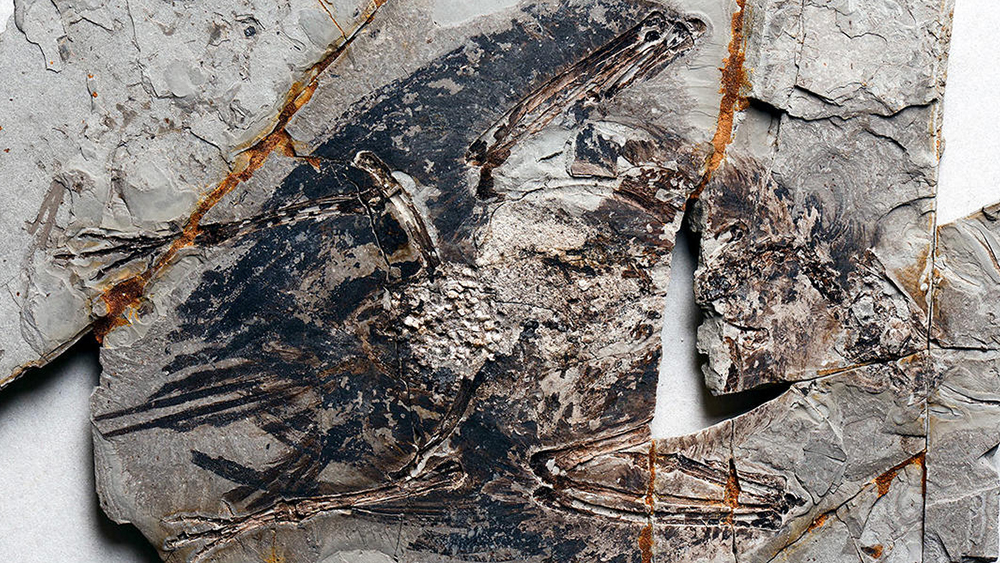A pristine Mesozoic bird fossil showed impressions of feathers and even some organs, including what appear to be lungs. The technical article published in the leading journal PNAS did not report any original body tissue, nor any substance that literally felt soft.1 Instead, the now-decomposed lungs left such detailed impressions that researchers saw lung microstructures. Two aspects of this set of probable lungs confirm biblical creation.
First, researchers found that the lungs look exactly like those of modern birds. Air flows through bird lungs in one direction instead of in and out as in mammal lungs. How could one lung design have evolved into a completely different arrangement without leaving the imagined transitional animal(s) breathless?
This recent news that fossil bird lungs look already fully bird-like exactly fits the Genesis-based idea that God created birds. ![]()
This question has taken the wind out of evolutionary sails. For example, evolutionist Michael Denton’s classic book Evolution: A Theory in Crisis described bird lungs as too lofty a challenge for evolution to fly over. This recent news that fossil bird lungs look already fully bird-like exactly fits the Genesis-based idea that God created birds. Once again the fossils show no evolution.
The fossil had other similarities with modern birds. LiveScience wrote that “it appears that the fossilized lung was embedded in the bird’s ribs, just as bird lungs are today.”2 Science News wrote that “the bird had a pointed tail known as a pintail, something previously unknown in birds that lived during the Mesozoic…but found in modern birds such as the pintail duck.”3
Another aspect that points to creation has to do with China’s early Cretaceous Jehol rocks from which researchers collected the fossil. Its location in the strata makes it the oldest known fossilized bird lung. The PNAS study authors wrote, “This suggests that the general structural design of the avian lung has been conserved for a very long time, being already present in the most primitive members of the Ornithuromorpha, the clade that includes Neornithes [modern birds], and can be presumed to have considerable functional utility.”1
Once again the fossils show no evolution. ![]()
The countercurrent exchange microstructures make bird lungs the most efficient “functional” lungs around. Now why would this structural design already exist in the most primitive (actually, the lowest strata) bird lungs? This news that even the earliest bird lungs were fully formed fits the Genesis-based idea that God created birds with their efficient lungs right from the start.
References
1. Wang, X. et al. Archaeorhynchus preserving significant soft tissue including probable fossilized lungs. Proceedings of the National Academy of Sciences. Published online before print October 22, 2018, accessed November 7, 2018.
2. Geggel, L. Exquisitely Preserved Lungs from 120 Million Years Ago Stun Scientists Studying Early Bird. LiveScience. Posted on livescience.com October 19, 2018, accessed November 6, 2018.
3. Gramling, C. In a first, scientists spot what may be lungs in an ancient bird fossil. Science News. Posted on Sciencenews.org October 19, 2018, accessed November 6, 2018.
Stage image credit: Copyright © 2018. PNAS. Used in accordance with federal copyright (fair use doctrine) law. Usage by ICR does not imply endorsement of copyright holders.
*Mr. Thomas is Science Writer at the Institute for Creation Research.
Article posted on November 29, 2018.














